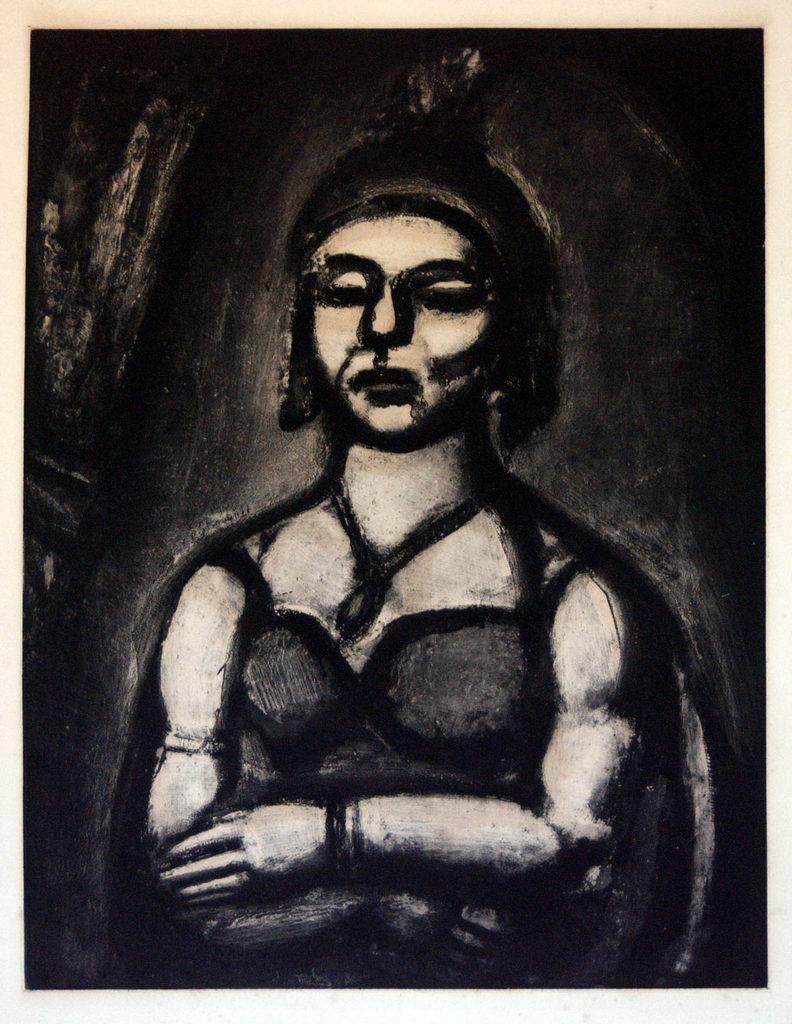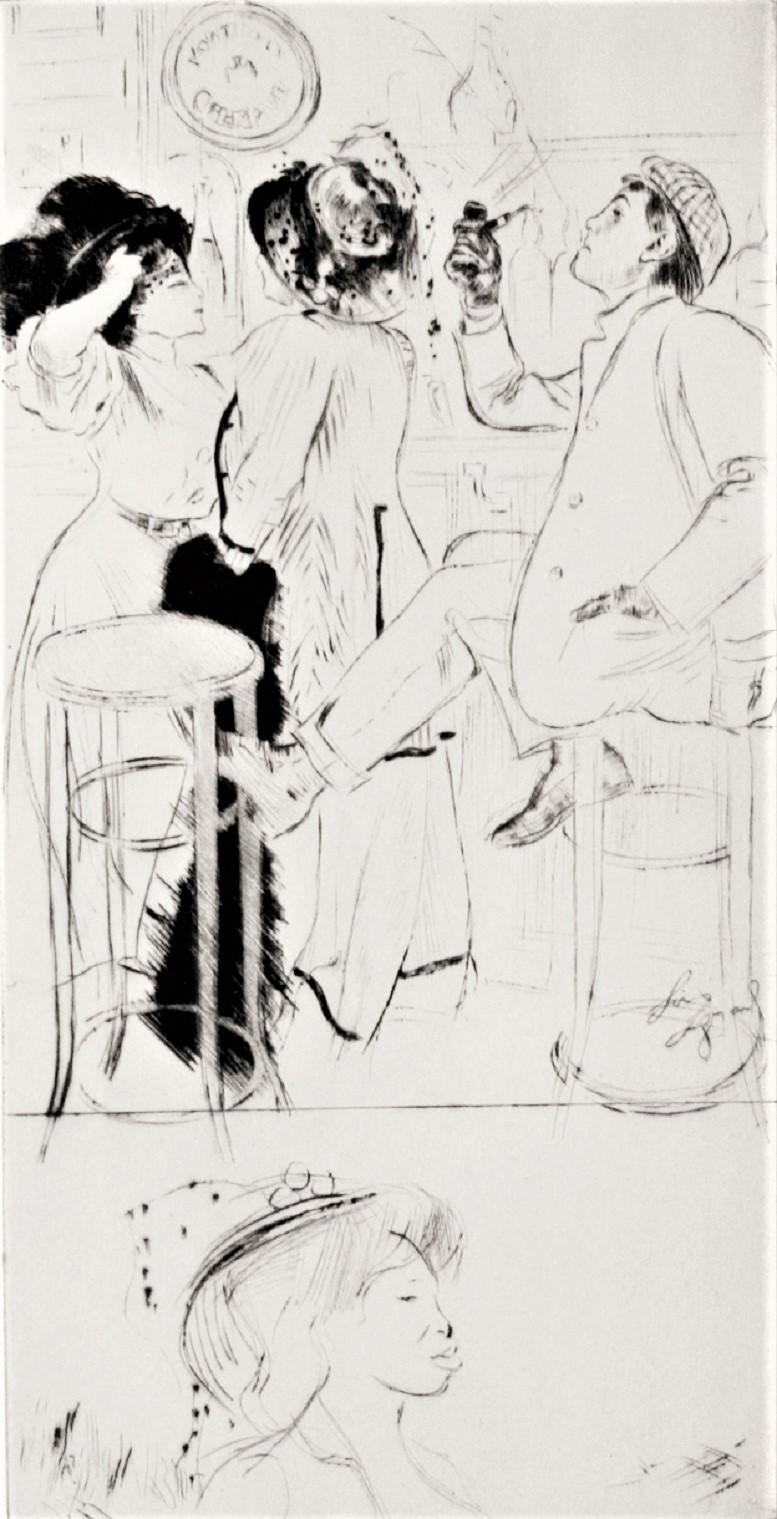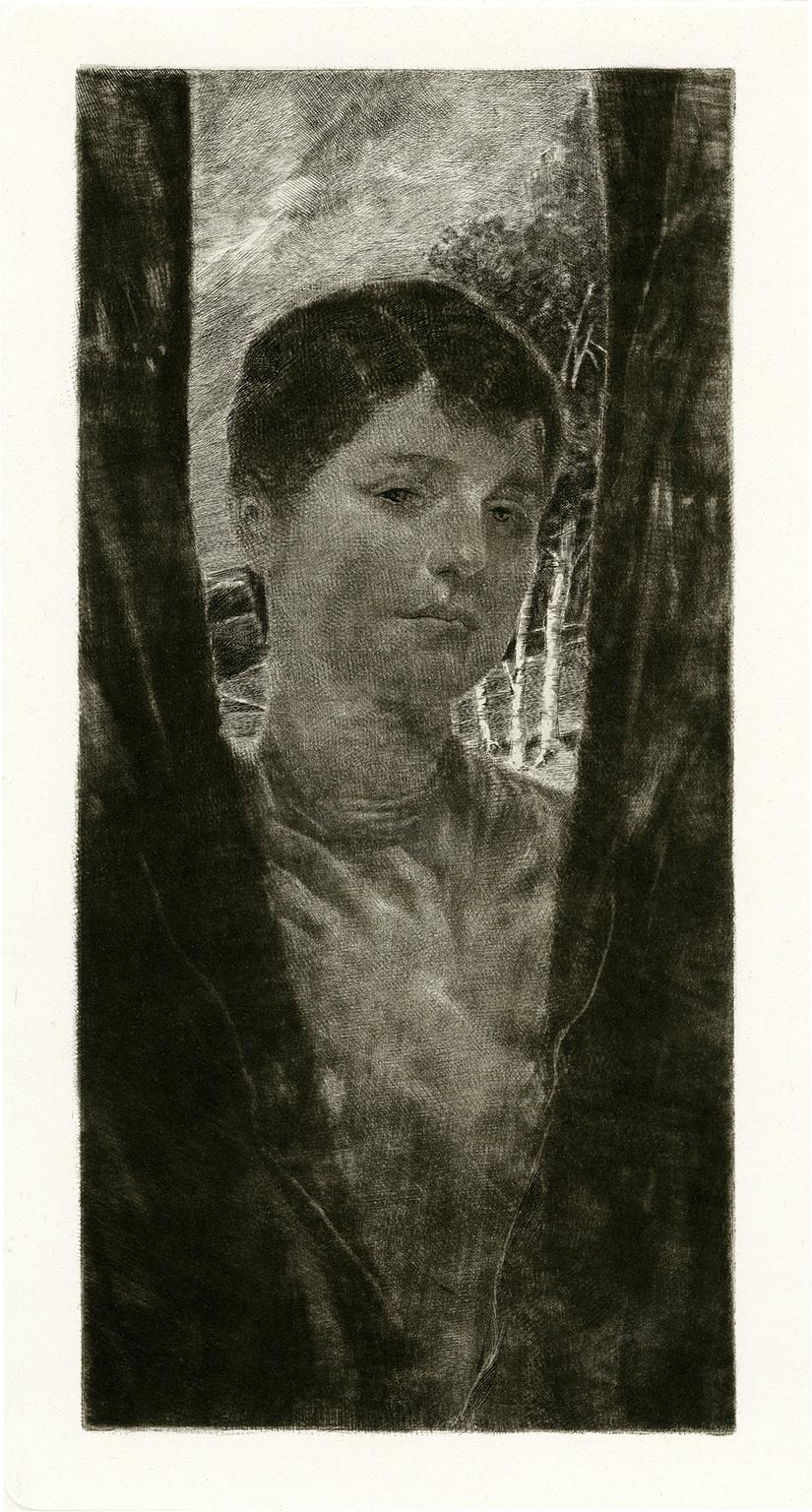Items Similar to La Tétée de la Mère et ses Enfants - Etching by F. Charlet - Early 1900
Want more images or videos?
Request additional images or videos from the seller
1 of 6
Frantz CharletLa Tétée de la Mère et ses Enfants - Etching by F. Charlet - Early 1900Early 1900
Early 1900
About the Item
La Tétée de la Mère et ses Enfants is a color etching realized by the Belgian artist Frantz Charlet in the early 20th century.
It is a beautiful and touching domestic scene portraying a woman breastfeeding her little child, surrounded by two children.
Dimensions: cm 63,5 x 45,5. Image dimensions: cm 45 x 36. In very good condition.
Lovely artwork by Frantz Charlet (1862–1928), a Belgian painter, etcher, and lithographer. Considered as an Impressionist, he was one of the founding member of Les XX.
- Creator:Frantz Charlet (1862 - 1928, Belgian)
- Creation Year:Early 1900
- Dimensions:Height: 25.01 in (63.5 cm)Width: 17.92 in (45.5 cm)Depth: 0.08 in (2 mm)
- Medium:
- Movement & Style:
- Period:
- Condition:Insurance may be requested by customers as additional service, contact us for more information.
- Gallery Location:Roma, IT
- Reference Number:
About the Seller
4.9
Platinum Seller
These expertly vetted sellers are 1stDibs' most experienced sellers and are rated highest by our customers.
1stDibs seller since 2017
6,770 sales on 1stDibs
Typical response time: 3 hours
- ShippingRetrieving quote...Ships From: Grasse, France
- Return PolicyA return for this item may be initiated within 14 days of delivery.
More From This SellerView All
- Des Ongles Et Du BecBy Georges RouaultLocated in Roma, ITEdition of 450 prints, belonging to the suite “Miserere”, considered as the most important religious graphic work of XX century. The single prints, realized with a sophisticated mixe...Category
1940s Post-Impressionist Figurative Prints
MaterialsEtching
- Au Bois de Boulogne - Original Etching by H. Farge - Mid 20th CenturyLocated in Roma, ITImage dimensions: 16 x 11 cm. Au Bois de Boulogne is an original modern artwork realized in the first decades of the XX Century by the French artist Henri Farge...Category
Mid-20th Century Post-Impressionist Figurative Prints
MaterialsEtching
- L’Ane - Original Etching and Aquatint by G. Rouault - 1927By Georges RouaultLocated in Roma, ITL’Ane is an original lithograph, realized by Georges Rouault in 1927, hand signed, Ambroise Vollard's stamp, trial proof of the first state, printed in 10 copies. Included a frame. In very good conditions. The artwork demonstrates a man-donkey creature dressed in suit formally and with a glasses. Georges Henri Rouault (1871-1958) was a French painter, print-maker artist, his artworks are often associated with Fauvism and Expressionism. He is well-known for paintings dedicated to courts, clowns and prostitutes. He was inspired by spirituality and knowledge of medieval stained glass...Category
1920s Post-Impressionist Figurative Prints
MaterialsAquatint, Etching
- Working - Original Etching by A. Delasalle - Mid-20th CenturyBy Angèle DelasalleLocated in Roma, ITWorking is a contemporary artwork realized by the French artist Angèle Delasalle in the Mid-20th Century. Original etching and drypoint. Signed and ...Category
Mid-20th Century Post-Impressionist Figurative Prints
MaterialsEtching
- Study for a Nude - Original Etching by A. Delasalle - Mid-20th CenturyBy Angèle DelasalleLocated in Roma, ITStudy for a Nude is a contemporary artwork realized by the French artist Angèle Delasalle in the Mid-20th Century. Original etching and drypoint. Si...Category
Mid-20th Century Post-Impressionist Figurative Prints
MaterialsEtching
- La Moisonneuse Endormie - Original Etching by D. de Segonzac - 1929By André Dunoyer de SegonzacLocated in Roma, ITEdition of 60 pieces, printed on verge ancient, numbered and signed by the artist in pencil. Customs stamp on bottom left angle. Good margins. Ref. Cat. Lioré et Cailler 845.Category
1920s Post-Impressionist Figurative Prints
MaterialsEtching
You May Also Like
- SportsmenBy Louis LegrandLocated in Storrs, CTSportsmen. 1908. Etching and drypoint. Exsteens 271.i/ii. 11 1/4 x 5 3/4 (sheet 17 3/8 x 12 1/4). Series: Les Bars. From the first state edition of 30 proofs with the remarque sketch...Category
Early 1900s Post-Impressionist Figurative Prints
MaterialsDrypoint, Etching
- Erinnerung (Remembrance) — Turn-of-the Century Romantic EtchingBy Max KlingerLocated in Myrtle Beach, SCMax Klinger, 'Erinnerung (Remembrance)', etching and aquatint, 1896. A fine, richly inked impression, on off white, wove paper, with full margins (1 3/4 to 3 1/8 inches), in excellen...Category
1890s Post-Impressionist Figurative Prints
MaterialsAquatint, Etching
- Charlotte and Amalia by Lélia Pissarro - EtchingBy Lelia PissarroLocated in London, GBCharlotte and Amalia by Lélia Pissarro (b. 1963) Etching 22.7 x 27.5 cm (9 x 10 ⁷/₈ inches) Signed lower left, Lélia Pissarro Numbered lower right, 2/15 Artist biography: Born in P...Category
1990s Post-Impressionist Figurative Prints
MaterialsEtching
- La Marchande des Quatres-SaisonsBy Edgar ChahineLocated in Middletown, NYEtching with drypoint on cream wove paper, 11 3/4 x 13 3/4 inches (297 x 347 mm), full margins. Signed in pencil and numbered 32/40, lower margin. Minor mat tone and several small lo...Category
Early 20th Century Post-Impressionist Portrait Prints
MaterialsHandmade Paper, Rag Paper, Drypoint, Etching
- "Mlle Landsberg" (grade planche, pl. 16)By Henri MatisseLocated in Missouri, MO"Mlle Landsberg" (grade planche, pl. 16), 1914 Henri Matisse (French, 1869-1954) Signed and Numbered Lower Right Edition 12/15 Image size: 7 7/8 x 4 5/16 inches Sheet size: 17 11/16 x 12 1/2 inches With frame: 19 1/2 x 14 1/2 inches Henri Matisse came from a family who were of Flemish origin and lived near the Belgian border. At eight o'clock on the evening of December 31, 1869, he was born in his grandparents' home in the town of Le Cateau in the cheerless far north of France. His father was a self-made seed merchant who was a mixture of determination and tightly coiled tension. Henri had no clear idea of what he wanted to do with his life. He was a twenty-year-old law clerk convalescing from appendicitis when he first began to paint, using a box of colors given to him by his mother. Little more than a year later, in 1890, he had abandoned law and was studying art in Paris. The classes consisted of drawing from plaster casts and nude models and of copying paintings in the Louvre. He soon rebelled against the school's conservative atmosphere; he replaced the dark tones of his earliest works with brighter colors that reflected his awareness of Impressionism. Matisse was also a violinist; he took an odd pride in the notion that if his painting eye failed, he could support his family by fiddling on the streets of Paris. Henri found a girlfriend while studying art, and he fathered a daughter, Marguerite, by her in 1894. In 1898 he married another woman, Amelie Parayre. She adopted the beloved Marguerite; they eventually had two sons, Jean, a sculptor and Pierre who became an eminent art dealer. Relations between Matisse and his wife were often strained. He often dallied with other women, and they finally separated in 1939 over a model who had been hired as a companion for Mme. Matisse. She was Madame Lydia, and after Mme. Matisse left, she remained with Matisse until he died. Matisse spent the summer of 1905 working with Andre Derain in the small Mediterranean seaport of Collioure. They began using bright and dissonant colors. When they and their colleagues exhibited together, they caused a sensation. The critics and the public considered their paintings to be so crude and so roughly crafted that the group became known as Les Fauves (the wild beasts). By 1907, Matisse moved on from the concerns of Fauvism and turned his attention to studies of the human figure. He had begun to sculpt a few years earlier. In 1910, when he saw an exhibition of Islamic art, he was fascinated with the multiple patterned areas and adapted the decorative universe of the miniatures to his interiors. As a continuation of his interest in the "exotic", Matisse made extended trips to Morocco in 1912 and 1913. At the end of 1917, Matisse moved to Nice; he would spend part of each year there for the remainder of his life. A meticulous dandy, he wore a light tweed jacket amd a tie when he painted. He never used a palette, but instead squeezed his colors on to plain white kitchen dishes...Category
1910s Fauvist Figurative Prints
MaterialsEtching, Drypoint
- Horse Pulling Hay Cart by Félix Pissarro - Animal etchingBy Félix PissarroLocated in London, GBHorse Pulling Hay Cart by Félix Pissarro (1874-1897) Etching 19.5 x 15 cm (7 ⅝ x 5 ⅞ inches) Exhibition London, Stern Pissarro Gallery, Camille Pissarro & hi...Category
1890s Post-Impressionist Animal Prints
MaterialsEtching
Recently Viewed
View AllMore Ways To Browse
Antique Se
F 45
Art Breastfeeding
Frantz Charlet On Sale
War Wood Cuts
Vintage Weather House
Vintage Vinyl Records
Haring Subway
Judaica Lithograph
Skeleton Prints
Large Shadow Box Art
Large Miro Lithograph
Midcentury Portrait Of Native
Pencil Sketch Figure
Vintage Dress Sketch
Vintage Dresses Sketches
African Renaissance
Renaissance Vintage Clothing





